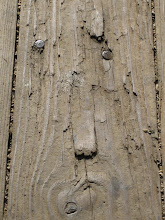 It's March now and another Grammy award season has come and gone. Despite all the cocktail parties, one-hit wonders and botched riffs, it is a time of year that reminds me of what great rock music really is. My ritual is pretty simple. I sit down in front of the T.V. and immediately turn off the Grammy telecast. I then pop a copy of the Rolling Stones' Exile on Main Street into my stereo and immerse myself into sixty minutes of all things wild, disobedient, bluesy, incoherent, angst-riddled and sleazy.
It's March now and another Grammy award season has come and gone. Despite all the cocktail parties, one-hit wonders and botched riffs, it is a time of year that reminds me of what great rock music really is. My ritual is pretty simple. I sit down in front of the T.V. and immediately turn off the Grammy telecast. I then pop a copy of the Rolling Stones' Exile on Main Street into my stereo and immerse myself into sixty minutes of all things wild, disobedient, bluesy, incoherent, angst-riddled and sleazy.For me, this rough mix of sound is crucial. Rock n' roll should never be pretty. Rock n' roll is dirty, raucous, vulgar, teeth-gnashing music with a nod to the blues and gospel. On Exile, the Stones laid down a scattered mix of murky riffs and lyrics. Guitars, horns, drums and lyrics occasional pop out of the murk for a riff or two before submerging back into the fray, with Mick Jagger letting loose an occasional muddled howl. Exile is an enduring testament that the power of rock is in the riff and the raucousness, not the catchy hook or pretty lyric.
The songs cover the full spectrum of the Stones' abilities. There's pure Stones' rock ('Rocks Off', 'Tumbling Dice'), country ('Torn and Frayed', 'Sweet Virginia'), gospel (the magnificent 'I Just Want to See His Face', 'Let It Loose') and blues ('Turd on the Run'). The two bluesy covers (Slim Harpo's 'Hip Shake' and Robert Johnson's 'Stop Breakin' Down') show that the Stones were well aware of their genre's pedigree.
This rough sound was born of rough sessions. The Stones had skipped out of England to avoid taxes (thus the "Exile") and settled in the south of France. Recorded initially in Keith Richards' Villa Nellcote home on the French Riviera, the sessions were late starting and drug-drenched. Richards, producer Jimmy Miller, guitarist Mick Taylor, saxman Bobby Keys, and guests Gram Parsons and John Lennon were doing a lot of drugs. Jagger missed half the sessions to be with his pregnant wife Bianca in Paris and Bill Wyman sat out a lot of sessions due to his general dislike for the vibe - he played on as few as nine tracks or as many as fourteen, depending on the source. The basement studio was painfully crude, and it was so hot and humid that guitar strings would occasionally expand and go out of tune. Basically, it was a shitshow.
"The basement was like a labyrinth of concrete and brick cubicles - not really separate rooms, more like stables, stalls," said Richards. "Charlie's round the corner in the second cubicle on the left, Bill's over there in that one, someone else is under the staircase. I could see Charlie's left hand flicking away. I would never rely on headphones; as long as I could see that I knew that we were in time."
According to Richards, Nellcote had served as Gestapo headquarters during WWII, complete with swastika covered floor vents. "I found a box down there with a big swastika on it, full of injection phials," said photographer Dominique Tarle. "They all contained morphine. It was very old, of course, and our first reaction was, 'If Keith had found this box...' So one night we carried it to the end of the garden, and threw it into the sea."
While most tracks were initiated in France, a couple were leftovers from the Let It Bleed sessions ('Sweet Virginia') and others were recorded in full at Sunset Sound Recorders in Los Angeles afterwards ('Loving Cup', 'Torn and Frayed'). While Richards was in charge in France, Jagger took over in L.A. It was there that the rest of the basic tracks were enhanced with piano, background vocals and gospel influences courtesy of Billy Preston and Dr. John.
Exile has aged well not only because it is a sensational rock album, but because it reminds us of what we have lost. And I'm not just talking about the Stones themselves - little more than plugged-in skeletons who make music that can actually be mistaken for a KD Lang tune. What we have lost is the rock n' roll. Just take a look at our contemporary rock scene. It consists mostly of old men who used to rock (Bruce Springsteen, U2, Paul McCartney) or young men who never have (can someone explain the Foo Fighters or Green Day to me?). I'm sorry, but that ain't rock n' roll. Yuppie rock maybe, but certainly not true rock n' roll. This is the era of kid gloves; of palatable art and entertainment that's easy to digest and doesn't ask for any effort from the audience. The good stuff is still there, but you have to dig.
It seems almost impossible to imagine in today's world of Grammy crap-o-la, but there was a time when the most popular artists were also the best. Exile on Main Street, one of the great achievements in rock, reminds us of those days.

